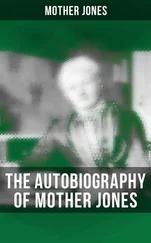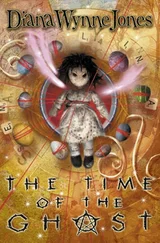Allergy is a classic of the interaction of gene and environment. Long ago, the genes that today cause problems may have been useful as those with an active immune system were good at resisting infection. After soap, in an unnaturally clean household, an over-active immune system became a nuisance as it disposes to allergy. The environment has changed, but the genes remain the same. Today's DNA has quite different effects on health than it once did, and a change in the interaction of nature with nurture leads to an outbreak of illness.
The term 'cancer' covers a multitude of conditions. All are due to a failure to control cell division. Hundreds of genes control the growth of cells anil, when they mutate, the process may go out of control. As in ****** all kinds of mistakes can happen. A single DNA I use may change or whole sections of the message be lost. Sointlitnes the error involves genes moving from one chromosome to another, or from the effects of viruses. Often, several different genetic accidents are needed to promote the development of a tumour. The general picture is not much different from that of mutation in sperm or egg.
Cancer is a Siamese cat of an illness, and the chances of contracting it depend both on the genes and the circumstances with which they are faced. Cell division needs brakes and accelerators. The first, tumour suppressor genes as they are called, control a set of proto-oncogenes that encourage cells to grow. If either party goes wrong, then division speeds up. The cell, though, has a set of speed cameras that control rogue genes. It must pass through a number of checkpoints on the road to division, and if anything is suspicious the cell dies (which is, after all, the natural fate of most cells}. Many of the causes of cancer increase the amount of a specific protein — P53, as it is called — that is sensitive to any sign of DNA damage in the cells under attack. Most then commit suicide rather than causing trouble. Indeed, many cancer treatments (themselves often agents of the illness, like radiation and certain chemicals) themselves wake up the P53 genes and persuade the cells to do the decent thing. Damage to the checkpoint itself (either inherited, or caused by the external agent) means real trouble: by that time the rogue line of cells is through the last safety barrier and may be impossible to contain.
Some cancers are more common among those exposed to a particular hazard. Many chimney-sweeps died of a skin cancer, which appeared first on the scrotum. The English physician Percival Pott suggested that soot was to blame. He was right. Soot, oil and tar contain many carcinogenic chemicals. Radiation, too, can be dangerous. As many as two thousand cases of lung cancer per year in Britain — a twentieth of the total — arise from exposure to radon. There were once thought to be clusters of childhood leukaemia cases around nuclear power-stations but these have now been dismissed on statistical grounds. For most Britons, exposure to radiation is so low that it cannot be an important general cause of cancer.
Some may be less fortunate. The Techa River tuns through Chelyabinsk, once the nuclear capital of Russia. During the height of the Cold War, so much waste was dumped that a fisherman on its banks could get a lethal dose in a week. Many riverside villages have been moved, but the inhabitants of those that remain have increased levels of leukaemia and of cancers of the thyroid and other organs. Even so, the effects are less than those suffered by the survivors of the Hiroshima bomb, so that a sudden burst of radiation may be more dangerous than the same dose given over a longer period. As western safety standards are based on the Japanese cancer figures, there have been calls to relax the minimum dose, but those are resisted by many who believe that no safe lower limit exists.
Whatever the effects of radiation on cancer, chemicals are more important. Those in tobacco smoke are potent agents and some industrial chemicals are just as bad. Alcohol, too, is far from blameless. Certain chemicals bind to DNA to cause their damage. The amount of bound material gives an estimate of exposure to mutagens. The Polish city of Gliwice, which burns much soft coal, is one of the most polluted places in the world. Gliwice has a high rate of cancer. Many inhabitants have large amounts of poisonous chemicals stuck to their DNA. The amount goes up in the winter, when the smoke is at its worst. Many of those exposed will develop the disease.
Other cancers (such as retinoMastoma, a degenerative disease of the retina) run in families, with no obvious environmental link. The causes of the disease run all the way from gene (predominant in retiiioblasioiu.i) to environment (equally so in scrotal cancer), but usually includes both. Workers in the primitive oil industry believed that people with fair hair and freckles should not be employed they were at risk of 'sootwort', as scrotal cancer was known. As such people are in more danger of skin cancer when exposed to sunlight, there may be some truth in the idea.
Seven million die of cancer each year. Many expose themselves to environments so dangerous that even the finest genes cannot save them. Caliban himself could not have devised a contrivance as fiendish as the cigarette: a cheap drug delivery system that provides a narcotic as addictive as heroin and some of the most carcinogenic of all chemicals. Hundreds of millions of people have volunteered themselves as subjects in a gigantic experiment and millions have obligingly died. Their generosity proves the joint actions of nature and nurture. If everybody smoked, lung cancer would be a genetic disease. Many of the cellular checks and balances have a lot of natural variation. For one crucial member, about one person in ten has a highly active form which, when faced with tobacco smoke, does its job very well — and, as it does so, produces a dangerous carcinogen. As a result, light smokers with this form of the gene face a seven times greater risk of lung than do those with other variants (although in heavy smokers, who batter all their defences into submission with massive doses of poison, the risk merely doubles).
Even when DNA is damaged, it can be repaired. A few families lack one or other of the enzyme systems involved,uid as a result are at high risk. Their activity in the population as a whole varies a hundredfold; and, once again, those with the feebler forms are at increased risk if they smoke. Indeed, such forms are five times commoner among smokers with lung cancer than in those who escape the disease. Blacks who smoke have higher rates than do whites, and this too is associated with some unidentified genetic difference among the groups.
Smokers can choose whether to poison themselves but others are not so lucky and fall, through no fault of their own, into the pit dug by their genes. Liver cancer is the fifth commonest cancer in the world with its capital in Africa and in China. The immediate cause is aflatoxin; a chemical made by the moulds that grow on badly stored foods such as peanuts, rice, beans and other staples of the tropical diet. They destroy the immune system, stunt growth, and cause cancer. Those with the disease have a new mutation in a gene whose normal role is to prevent cells from uncontrolled division. The mutation is of the kind produced by aflatoxin in the laboratory and the peoples of these regions have high levels of the poison in their blood. Improvements in food storage could control liver cancer. Poverty means that even this may not be achieved.
Moves are afoot to protect at least some of those at risk. Heavy smokers — about one in ten of whom will develop lung cancer — are given vitamin A in the hope of reducing the effects of mutations in lung cells. Those who inherit a gene that predisposes to colon cancer are treated with aspirin before they develop symptoms as this might reduce its effects. Such illnesses are sometimes seen as a kind of programmed Nemesis about which nothing can be done. An appreciation of the role of the environment shows this to be untrue.
Читать дальше
Конец ознакомительного отрывка
Купить книгу












